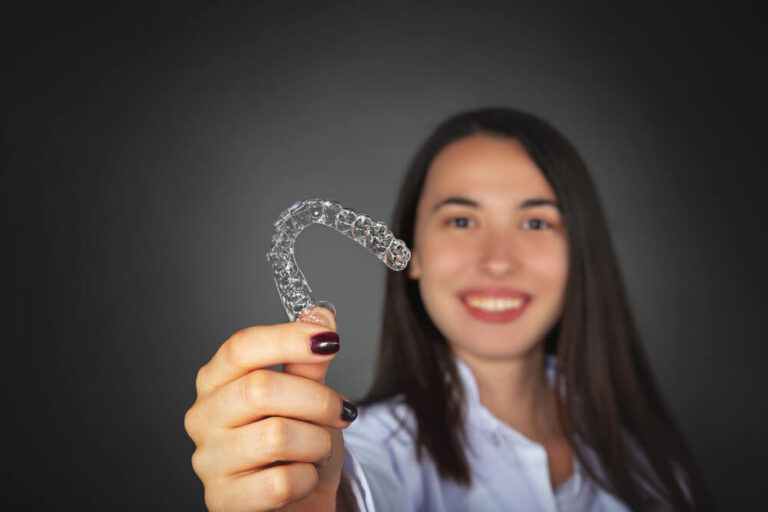Welcome to our in-depth exploration of the Smile Direct Club lawsuit. In this blog post, we’ll delve into the fascinating world of tel orthodontics and dissect the controversies that have been brewing in this nascent field.
Our focus will be on the Smile Direct Club (SDC), a company that has revolutionized orthodontics but has also been embroiled in multiple legal battles.
Overview of SmileDirectClub and Its Business Model
SmileDirectClub, a trailblazer in the orthodontics market, launched with the promise of providing affordable, convenient teeth-straightening solutions. Their business model is unique; customers can either take their own dental impressions at home or visit a SmileShop for 3D scans. These scans are then used to create customized clear aligners, which are sent directly to the customers, thereby bypassing traditional in-office orthodontic visits.
As innovative as this method may sound, it has also sparked controversy. Critics, including dental professionals and regulatory bodies, question the safety of such a model, expressing concerns about the lack of in-person supervision. These apprehensions about the adequacy of remote care and potential risks associated with unsupervised treatment have given rise to a host of legal challenges and regulatory scrutiny.
Class Action Lawsuits Against SmileDirectClub
The Smile Direct Club has found itself at the receiving end of multiple class action lawsuits. These lawsuits have been largely filed by disgruntled customers, alleging that the company provided inadequate care and misrepresented the safety and effectiveness of their products.
Reports of dental issues such as misaligned teeth, gum problems, and jaw pain after using SDC’s aligners have been common among the complainants.
Moreover, these lawsuits have thrown a spotlight on systemic issues within SDC’s operations. Plaintiffs argue that SDC’s marketing materials were misleading, frequently downplaying the potential risks and limitations of their remote orthodontic services.
These legal battles have not only marred the company’s reputation but also raised broader questions about the safety and viability of tel orthodontics as a whole.
Business Practices and Regulatory Scrutiny
SmileDirectClub’s aggressive marketing tactics and business practices have attracted significant regulatory scrutiny. Various dental associations and regulatory bodies have challenged SDC’s methods, arguing that the company’s model poses risks to patient health. Regulatory complaints often focus on the lack of direct dentist supervision, which is seen as crucial for safe and effective orthodontic treatment.
The company’s response to these challenges has been mixed. While SDC has defended its practices and emphasized the affordability and accessibility of its services, the mounting legal and regulatory pressures have forced the company to make some changes. These include modifying their refund policies and enhancing disclosures about the potential risks of using their products without in-person dental supervision.
Settlement Agreements and Changes to Refund Policies
In light of the numerous lawsuits and regulatory actions, SmileDirectClub has been compelled to alter its refund policies. A notable settlement in 2023 required SDC to make its refund process more transparent and accessible to consumers.
This settlement was a response to widespread complaints about the difficulty of obtaining refunds and the dissatisfaction with the results of the aligners.
The changes mandated by the settlement aim to protect consumers and ensure they can easily seek redress if their treatment does not meet expectations. This development marks a significant shift in SDC’s customer service approach, reflecting a broader trend towards greater consumer protection in the telehealth and remote care industries.
Company Shutdown and Liquidation:
SDC’s sudden announcement of its shutdown sent shockwaves through the industry. The decision was primarily attributed to the financial drain caused by protracted legal battles and dwindling consumer trust. Customers undertaking treatment plans were left in a lurch, scrambling for clarity on refunds and future payments.
The confusion intensifies as the question remains unanswered: Will they be compensated for unfinished treatments? The company’s hasty exit underscores the inherent challenges and risks associated with innovative business models in the healthcare sector.
Impact on Consumers and the Future of Teleorthodontics:
The collapse of SDC has grave implications for consumers and the teleorthodontics industry at large. For SDC customers, the shutdown translates into a convoluted process of securing refunds and seeking alternative orthodontic care. With the continuity of their treatment hanging in the balance, they are left grappling with the financial repercussions of the company’s closure.
The industry, on the other hand, has been handed a cautionary tale about the significance of regulatory compliance and patient safety. While the allure of remote orthodontic care, with its convenience and lower cost, is undeniable, the Smile Direct Club saga accentuates the necessity for stringent oversight and transparent communication of risks.
The future of teleorthodontics now hinges on striking a balance between innovation and the rigorous standards that safeguard patient well-being.
Conclusion
In conclusion, the Smile Direct Club lawsuit serves as a significant case study for teleorthodontics and direct-to-consumer healthcare models. While the convenience and affordability that companies like SDC offer are undeniable, the lawsuits highlight the potential pitfalls of such a model. As we continue to explore the intersection of healthcare and technology, striking a balance between innovation and patient safety will be paramount.
The Smile Direct Club lawsuit represents a critical juncture in the world of teleorthodontics. The outcome of these legal battles will undoubtedly have a profound influence on the future of remote healthcare services. As we navigate this new frontier, one thing is certain: the debate surrounding the Smile Direct Club lawsuit will continue to shape the direction of teleorthodontic services for years to come.
As we reach the end of our deep dive into the Smile Direct Club lawsuit, we hope you have found this post informative and thought-provoking. Our aim was to shed light on this complex issue, allowing you to form your own informed opinion on the matter. Stay tuned for more engaging and detailed discussions on the latest developments in the world of healthcare.


